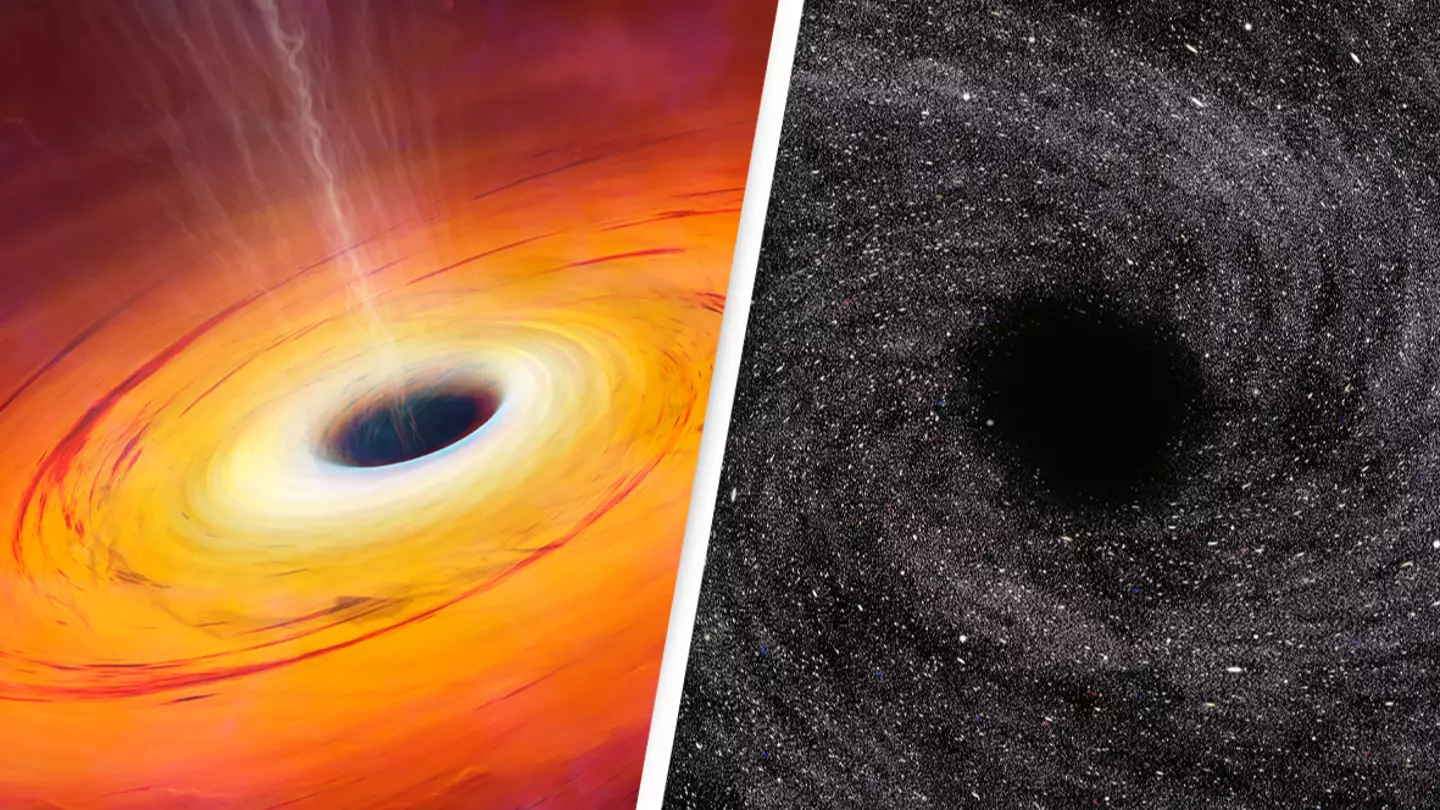
A huge black hole has been discovered in space - and it's actually quite close to Earth.
Black holes are formed at the end of a star's life. Their gravitational pull is so strong that not even light can escape.
It's not uncommon for them to be discovered by astronomers, with NASA having found a 13.2 billion-year-old black hole back in November.
Advert
What makes this one special is scientists have found it on our back door - relatively speaking.

One of the researchers even said it was 'the kind of discovery you make once in your research life'.
The European Space Agency’s Gaia mission found the black hole in our galaxy, the Milky Way.
Advert
Dubbed Gaia BH3, it's 33 times the size of the Sun.
Gaia BH3 is said to be the biggest black hole to have ever formed from an exploding star in our galaxy.
While it's 'close' to us, it's still 2,000 light years away - so I wouldn't worry about it destroying Earth just yet.
Advert
The newly discovered black hole hasn't been directly seen by scientists, but inferred from the movements of what appeared to be a lone star now understood to be its companion.
Apparently the star in question - part of the constellation of Aquila - was 'wobbling', which indicated astronomers to the nearby black hole it's believed to have been orbiting.
It's now predicted that more black holes might be discovered when the next chunk of data is released from the Milky Way-mapping Gaia space telescope.
This won't be until at least 2025, however.
.jpg)
Speaking about the historic find, Pasquale Panuzzo, an astronomer at the Observatoire de Paris, part of France's National Centre for Scientific Research (CNRS) who is the lead author of this finding, hailed Gaia BH3 as a 'real unicorn'.
Advert
"This is the kind of discovery you make once in your research life," he said in a statement.
"So far, black holes this big have only ever been detected in distant galaxies, by the LIGO–Virgo–KAGRA collaboration thanks to observations of gravitational waves."
Panuzzo went on: "It is a complete surprise, it is the most massive stellar origin black hole in our galaxy and the second nearest discovered so far."
According to NASA, there are around 50 stellar black holes that scientists have discovered in the Milky Way.
Advert
There's also a really big black hole in the middle of our galaxy - Sagittarius A*. That one is 4.3 million times larger than the Sun. Yikes.
Topics: Space, News, World News, Science